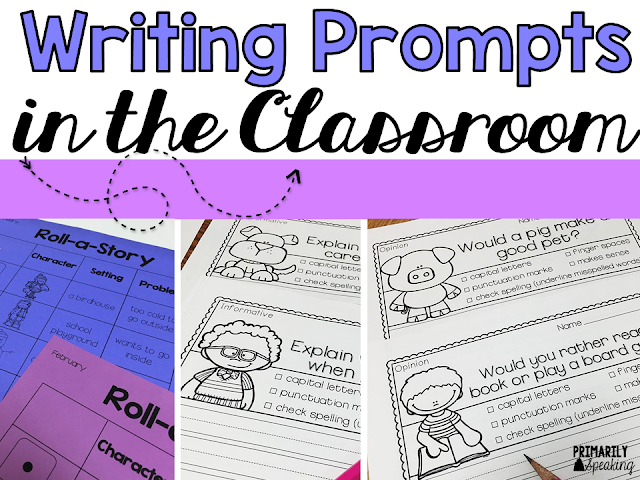Keeping Students Engaged Part 2: Scoot
Note: When I use the term structured engagement activity (see intro), I am referring to a learning activity that can be used and reused throughout the year with different skills and content. The content may change, but the activity and how it works does not. These structures allow students to be successful because they are familiar with them, and they don't get bored with them because the content is always different.
With that said, on to Scoot!
Scoot, oh how I love thee. I mean, it's versatile, it promotes individual engagement within a whole group setting, it gets the students moving, and it's fun (and learning should be fun).
What is it?
Scoot is an activity that encourages individual engagement within a whole group setting. It gets kids moving as they review previously learned concepts and skills, and as they practice new ones. It isn't subject specific, so it can be used with any skill within any content area. Seriously, I can't stress this enough: You can use it to practice and review ANY skill: time, two-digit addition and subtraction, contractions, parts of speech, and, well, anything!
In this activity, question cards are placed at your students' desks. Students are tasked with answering the question at each desk, starting with their own desk first. On your cue, the students "scoot" from desk to desk, answering each question on a recording page.
How to Play
Scoot is not a difficult "game," but it will take one or two rounds for your students to feel completely comfortable with it. Here's how to play:
- You need a set of cards with questions/tasks printed on them as well as a recording page for students to write their answers on.
- Place a card at each desk.
- Your students will scoot their way around the room, one desk at a time, on your cue. They start at their own desk, before scooting to the next desk.
- Call out the word "Scoot," to cue students to move to the next desk. Repeat until they have made their way back to their own desk.
- Each time they scoot, they will write the answer to each question on their recording sheet. Since they won't all start at the first question, be sure to remind your students to be mindful of the card they are on so that they can make sure to record their answer in the correct space on their recording page.
- At the end of the activity, go over the questions/answers with your students so that there is some sort of closure to the activity (and you can address any mistakes, misconceptions, etc).
Tip #1: I highly recommend that you establish a path of rotation before beginning your game. Keep this path of rotation the same each time you play so that students know what to expect.
Tip #2: If you aren't afraid to be silly, have fun as you call out the word "scoot!" Sometimes, I whisper the word....don't worry, I have a microphone. Sometimes, I like to use weird voices, or speak with an accent. This isn't necessary, but it adds an element of fun and interest for the kids, and you're sure to get a chuckle or two out of them.
Tips #3: Have your students signal when they are ready to move to the next desk. My students show their "unicorn horn" to let me know that they are ready to scoot. What's a unicorn horn, you ask? It just means that the students show me a thumbs up while resting their hand/fist on their forehead.
Tip #4: Call out different words. Instead of calling out the word "Scoot" each time, you could call out "Jump," or "Slide," or "Lunge," or whatever. The possibilities are endless, so get creative!
Materials
The questions you set out can be from a set of task cards or a set of cards specifically designed to be used as a Scoot game, like these cards shown below.
You can grab this set of two-digit addition and subtraction Scoot cards here for FREE!
Sometimes, I even let my students write the Scoot questions. And, let me tell you, this is a big deal. WAIT-no, it's a huge deal.
I created this recording page to use when the students create the questions.
If you'd like to give this idea a try, be sure to grab this free recording page here. :)
Tip #5: Whatever materials you decide to use, be cognizant of the time you have available to play the game. Think about the depth of the questions you put out. I like to use questions that can be answered relatively quickly because I don't want my students standing around and waiting too long for their classmates to finish up before everyone can scoot to the next desk.
Tip #6: Worried about struggling students? Pair students up and allow them to help each other with the questions as they scoot from desk to desk.
Final Note
I hope you were able to take a tip or two away from this post, and I truly hope you stop by next week for part three in the series.
::PIN IT:::
Missed Part 1? No problem! Click the link below to read all about I Spy.
Part One (I Spy)
And, visit these links to read the rest of the series:
Part Three (Quiz-Quiz-Trade)
Part Four (I Have, Who Has)
Toodles!
Share It:



















































